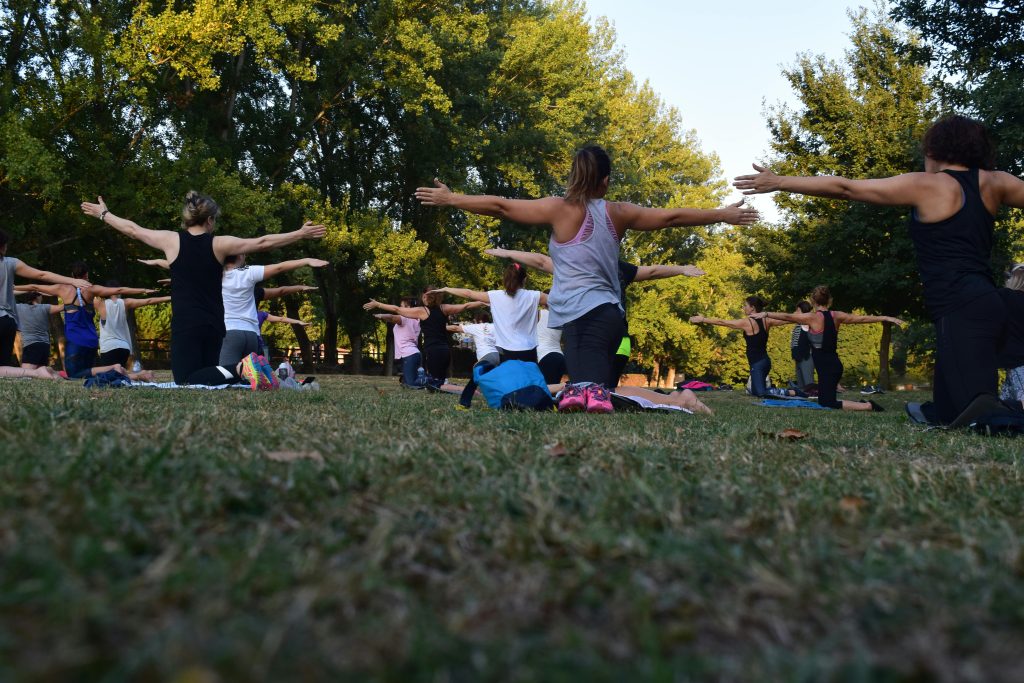Yoga Practice
Yoga is a journey of self-discovery, where each pose offers unique benefits for the mind, body, and spirit. One such transformative pose is the Knees, Chest, Chin Pose, also known as Ashtanga Namaskara. This posture, though seemingly simple, holds immense power and significance in a yoga practice. Let’s delve into the intricacies of Ashtanga Namaskara and explore how incorporating it into your routine can elevate your yoga practice to new heights.
What is Ashtanga Namaskara?
Ashtanga Namaskara, or the Knees, Chest, Chin Pose, is a foundational posture in yoga, particularly in the Ashtanga Vinyasa and Hatha Yoga traditions. The term “Ashtanga” means “eight-limbed” in Sanskrit, and “Namaskara” translates to “salutation” or “prostration.” Thus, Ashtanga Namaskara symbolizes an eight-pointed prostration where the eight parts of the body—feet, knees, chest, chin, and hands—touch the ground.
How to Perform Knees, Chest, Chin Pose
- Begin in Plank Position: Start in a plank pose with your body in a straight line from head to heels, wrists directly under the shoulders.
- Lower the Knees: Gently lower your knees to the mat while keeping your toes tucked under.
- Lower the Chest and Chin: As you exhale, bend your elbows and lower your chest and chin to the mat. Your elbows should be close to your sides.
- Alignment Check: Ensure that your hips are slightly lifted off the ground, and your chest and chin are touching the mat. Your hands should remain in line with your shoulders.
- Hold the Pose: Maintain the pose for a few breaths, feeling the stretch and engagement in your muscles.
- Release: To exit, slide your chest forward, coming into Cobra Pose (Bhujangasana) or move back into a resting position like Child’s Pose (Balasana).
Benefits of Ashtanga Namaskara
1. Strengthens the Upper Body
Ashtanga Namaskara is an excellent pose for building upper body strength. The act of lowering the body with controlled movement engages the muscles of the arms, shoulders, and chest. Regular practice helps tone these muscles and improves overall upper body endurance.
2. Enhances Flexibility
The pose encourages flexibility in the spine and hips. By lowering the chest and chin while keeping the hips elevated, you create a gentle arch in the back that stretches the spine and opens the chest. This stretch can help alleviate tension and improve spinal flexibility.
3. Improves Posture
Practicing Ashtanga Namaskara promotes better posture by strengthening the muscles that support the spine. It encourages alignment and helps counteract the effects of prolonged sitting and poor posture habits. This pose also enhances body awareness, allowing you to identify and correct posture issues more effectively. Regular practice can be a valuable complement to treatments from a chiropractor in Alpharetta, GA or your area, ensuring long-term spinal health and overall well-being.
4. Boosts Core Stability
The pose engages the core muscles, providing a workout for the abdominal region. Maintaining stability while lowering the body requires core strength, which can help enhance overall core stability and support other yoga poses.
5. Develops Mindfulness and Focus
Ashtanga Namaskara is a mindful pose that requires attention to alignment and breath. The focus needed to perform the pose correctly helps cultivate mindfulness and mental clarity, promoting a sense of calm and presence on the mat.
6. Prepares for Advanced Poses
Ashtanga Namaskara serves as a preparatory pose for more advanced postures. The strength, flexibility, and alignment skills developed in this pose can be applied to poses like Chaturanga Dandasana and various backbends.
Incorporating Ashtanga Namaskara into Your Practice
1. Warm-Up Sequence
Include Ashtanga Namaskara in your warm-up routine to gently awaken the muscles and prepare the body for deeper stretches. It can be seamlessly integrated into sun salutations (Surya Namaskar) as a variation of Chaturanga Dandasana.
2. Strength-Building Flow
Create a strength-building flow by combining Ashtanga Namaskara with other upper body poses like Downward Dog (Adho Mukha Svanasana), Plank Pose, and Cobra Pose. This sequence can help enhance upper body strength and endurance.
3. Restorative Practice
Incorporate Ashtanga Namaskara into a restorative practice to gently stretch the spine and chest. Holding the pose for longer durations with controlled breathing can provide a soothing and restorative experience.
Tips for a Safe Practice
- Warm Up: Always warm up your body before attempting Ashtanga Namaskara to prevent injury and improve flexibility.
- Focus on Alignment: Pay attention to your body alignment and formulightenment. Proper alignment ensures you reap the maximum benefits and avoid strain.
- Listen to Your Body: Avoid pushing yourself too hard, especially if you’re new to the pose. Gradually build strength and flexibility over time.
- Use Props: If needed, use props like a yoga block or bolster to support your chest or hips, making the pose more accessible.
Conclusion
Ashtanga Namaskara, the Knees, Chest, Chin Pose, is a powerful addition to any yoga practice. Its benefits extend beyond physical strength and flexibility, touching the realms of mindfulness and mental clarity. By incorporating this pose into your routine, you can experience a holistic transformation that enhances your overall well-being. Embrace the power of Ashtanga Namaskara and unlock new dimensions in your yoga journey.

